Communicating Christ in a Multicultural World
11. Hinduism
Lesson Objectives
To understand Hinduism, as one of the world major religions, and how to reach Hindus with the Gospel of Jesus Christ.
Introduction
Hinduism is the 3rd largest religion in the world. The term "Hindu" is of Persian origin; coined by Muslims invading India c. 1200, to describe the faith of the people they conquered. Hindus refer to their religion as santana dharma, or "eternal teaching, eternal law".
Hinduism is the major religion of India (around 83 per cent of the population). It is one of the oldest living religions. Unlike the other major belief systems, no single founder, prophet, set creed, ecclesiastical structure. A culture more than a creed, Hinduism is closely intertwined with the land and its traditions, social system and history, social system and history; affects family life, food, dress, and architecture. The caste system determines adherents' way of life and (often) occupations. This context affects (and often limits) Christian witness to Hindus. It also plays a part in ongoing Hindu-Muslim tensions in the Indian sub-continent and elsewhere
Hinduism is found in many countries, and its literature and philosophy have influenced people around the world. It sometimes appears in the West, but it is usually a "localised" incarnation (religion without the rigours), eg Hare Krishna communities; or the Beatles best-selling "My Sweet Lord" (1970), written by George Harrison in praise of the Hindu god Krishna.
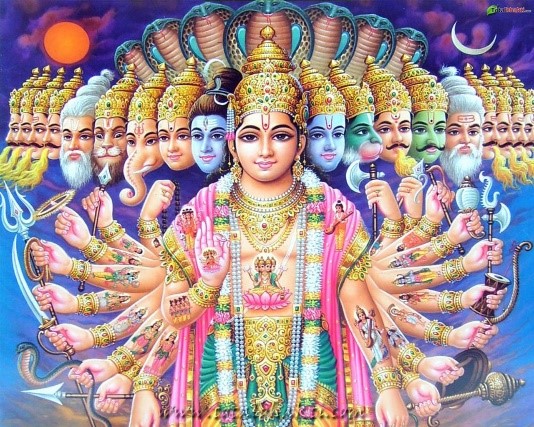
Origins
People in the ancient Indus Valley (between 3000 and 2000 B.C.) probably worshipped a Mother Goddess and a male deity, the forerunner of Shiva. When tribes speaking an Aryan language settled in northwest India around 1500 B.C., they adopted the prevailing religious ideas from the earlier inhabitants and incorporated them into their own rituals.
The Aryan-speakers were animists. Hindu hymns of the Rig-Veda (c. 1500 B.C.) refer to spirits controlling natural forces. Among the Vedic deities, Indra, Mitra, and Varuna were important, along with the Adityas, Rudra, and Prajapati. In time the first three were forgotten but the others gave rise to the Trinity of modern Hinduism. Prajapati became Brahma, Rudra became Shiva, and one of the Adityas became Vishnu. [The first thing one notices about Hinduism is the proliferation of gods.]
Scriptures
Hinduism has no single source of its doctrines, but many sacred writings, all of which have contributed to its fundamental beliefs. The oldest are written in Sanskrit.
Upanishads - the earliest books of Hindu philosophy, and were begun over 2,700 years ago. They were written as dialogues. During the next 2,000 years, important compositions like ancient law books, the epics Ramayana and the Mahabharata, and the Puranas established Hindu tradition.
Vedas - the teachings of the Vedas existed for centuries before they were finally written down. There are four Vedas - the Rig-Veda, the Sama-Veda, the Yajur Veda, and the Atharva-Veda, each of which has four parts - the Samhitas, the Brahmanas, the Aranyakas, and the Upanishads. The Samhitas contain prayers and hymns, and are the most important part. The Brahmanas deal with ritual and theology, and include explanations of the Samhitas. The Aranyakas deal with the philosophy of devotion for hermits and devotees.
Puranas - stories (from the 500s AD) that contain myths about gods and goddesses and the lives of heroes. They also describe Hindu beliefs about how the world began and how it periodically ends and is reborn. The Bhagavata Purana is the most widely read text for the worshippers of Vishnu.
Ramayana and Mahabharata - long epics. The Ramayana tells the story of Prince Rama and his attempts to rescue Sita, his wife, who was kidnapped by the demon king Ravana. The Mahabharata describes a battle between the Pandavas and the Kauravas, two families who are cousins.
LLD Bhagavad-Gita- a philosophical work, forms part of the Mahabharata. In it, the god Krishna and the Pandava warrior Arjuna discuss the meaning and nature of existence.
Dharma-Shastras - books on Hindu law and custom. The important ones are those written by Manu, Yajnavalkya, Parashara, and Narada.
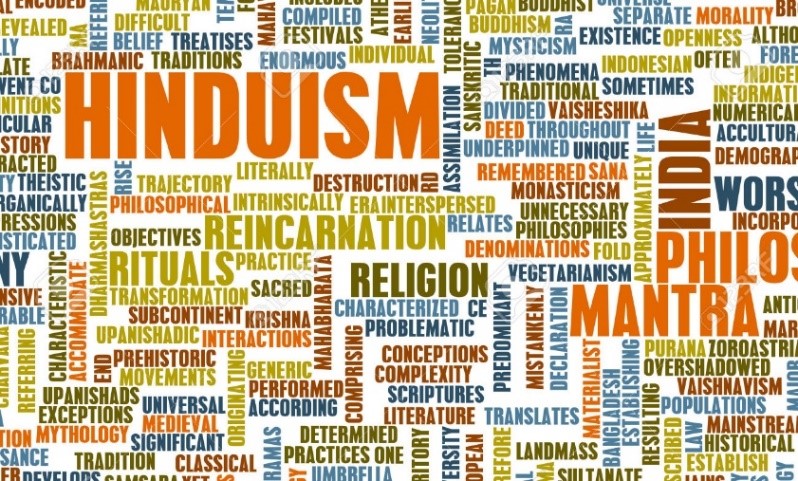
Hinduism is a complex religious system
Beliefs of Hinduism
Most Hindus believe in a supreme spirit, Brahman. Hindus must practice satya (truth) and ahimsa (non-violence). They must respect other people's property. Every Hindu follows the dharma (religious and moral duty) of varna, jati (caste), kula (family), and ashrama as best they can.
Hindus believe in life after death. Through reincarnation Hindu's believe an individual's atman, or soul follows various paths to achieve moksha (release from the cycle of birth and rebirth), and ultimate union with Brahma, or God.
God
The majority of Hindus believe in God, however, polytheistic (Hindus acknowledge "33 crores", or 330 million, gods). The Hindu idea of a supreme power evolved from the Rig Veda (as early as 1500 B.C.) to the Puranas. The deities of the Rig-Veda represent natural forces, including Indra (thunder), Agni (fire), Varuna (waters), Mitra (daylight), Rudra (storms), Ushas (dawn), Prithivi (earth), and the gods called the Adityas (light). Hindu philosophers believed these were different forms of the supreme spirit, Brahman.
Brahman is everywhere and has no form, quality, or gender. Beyond the understanding of ordinary people, so symbols, or images, were created. Since Brahman is abstract, it can be represented as male or female; human or animal; or a combination of these. Many different images are used in modern Hindu worship. They represent different aspects of Brahman. The three most important aspects of Brahman are Brahma, the Creator of the Universe; Vishnu, the Preserver; and Shiva, the Destroyer and Regenerator.
These three male deities are represented by a single image called the Trimurti. Their female consorts are respectively Saraswati, goddess of learning and the arts; Lakshmi, goddess of good fortune; and Shakti (also known as Parvati), the Mother Goddess. Shakti, in her destructive mood, is known as Durga or Kali (hence Calcutta). Other important deities of modern Hinduism are Ganesha, the elephant-headed god who removes obstacles; Hanuman, the personification of devotion and strength; and Kartikeya or Subrahmanya, who is widely worshipped in south India. All are aspects of Brahman. Hindus believe that Vishnu, the Preserver, came down to earth in nine Avatars, or incarnations, to protect humankind; the tenth incarnation is still to come. The popular incarnations of Vishnu are Rama, the hero of the Ramayana, and Krishna, the philosopher-god of the Bhagavad-Gita.
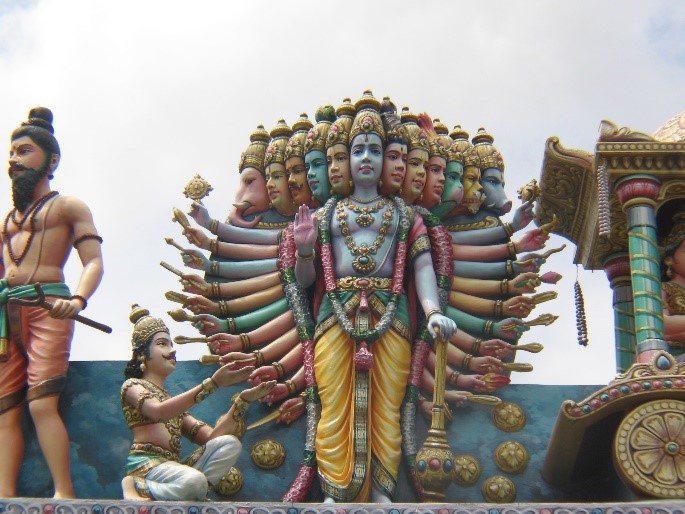
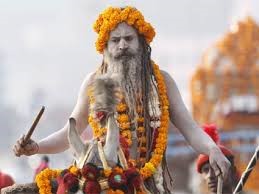
HINDU GODS
| GODS OF THE VEDIC PERIOD |
|---|
| Agni | Indra | Varuna |
| The life force of nature. | The god of fire and sacrifice. | The sky god and god of war The upholder of the cosmic order, with power to punish and reward |
| LATER GODS |
|---|
| Brahma - The Creator | Vishnu - The Preserver | Shiva - The Destroyer |
| The Lord of all creatures. Above all and beyond worship; few temples dedicated to him. | The controller of human fate. Draws near to man in ten incarnations (avartars). Generally kind. | Source of both good and evil. Destroyer of life and the one who creates new life. |
| Sarasvati | Lakshmi | Shakti , Kali/Durga |
| Consort of Brahma. Goddess of knowledge, learning and truth | Wife of Vishnu. Goddess of fortune and beauty. | Consort of Shiva. The "Great Mother The symbol of judgement and death |
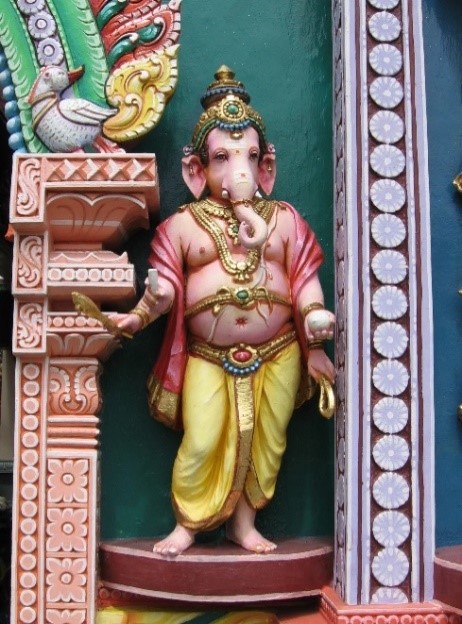
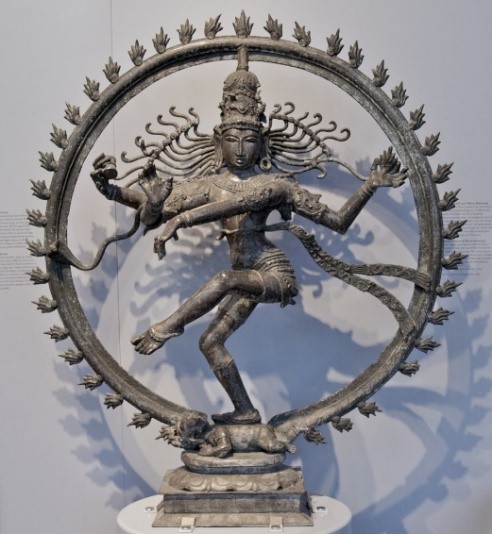
Reincarnation
Hindus have a cyclical view of time (Westerners have a linear view) and believe the soul does not die, but is re-housed in a new body after physical death. Reincarnation depends on karma (lit. a person's "work" or "actions" and their consequences). Every action influences how a person's soul will be born (through transmigration) in the next incarnation. The soul goes through many existences in a cycle (can be up to a million) of rebirths called the samsara. Eventually, the soul can achieve a new level of existence, called moksha, when it is released from the cycle of incarnations and united with (or comes as near as possible to) the supreme spirit, Brahman.
Paths
A person may follow various paths to the goal of moksha.
- The path of knowledge, jnana, involves deep study of the Vedas and the Upanishads, under the guidance of a learned teacher. Understanding the scriptures frees an individual from attachment to the material world and enables his or her soul to approach the supreme spirit.
- The path of yoga, or discipline, involves the study of philosophy, meditation, and physical exercises to achieve bodily control, again with the help of a teacher. Yoga joins the spiritual force of the mind with the material forces of the body to give health, long life, and inner peace. Yoga liberates the soul from the cycles of successive lives. Many Westerners practicing yoga do not understand its links with Hinduism.
- The path of karma, or action, involves a person doing his or her religious and social duty with respect to varna, jati, ashrama, and family tradition, in a spirit of detachment. Karma includes all physical activity, as well as the result of a person's actions. If a person acts in expectation of selfish reward, his or her soul cannot progress. All actions done as duty benefit both the individual and society, and lead the soul towards God.
- The path of devotion, bhakti, is the easiest way to experience the supreme spirit. The follower of this path centres his or her devotion on a chosen personal deity (ishwara); offers worship to the image of the deity; chants the deity's name constantly; and serves others by doing good deeds in the deity's name.
Ahimsa means non-injury, and in Hindu ethics is an important virtue. To practice ahimsa a Hindu must avoid physical, mental, emotional, and moral hurt to any living creature. Because Hindus believe animals also have souls, they have reverence for cows, monkeys, and other animals. They have special reverence for cows. Many Indian communities that neglect old people have "old cows homes". (One ancient verse says, "All who kill cows rot in hell for as many years as there are hairs on the body of the cow they killed".)
A devout Hindu's life is divided into four ashramas, though in practice women usually share in only the second and third. Ideally, each stage brings its own special duties. The ashramas are: brahmacharya (student), grihastha (householder), vanaprastha (retirement), and sannyas (renunciation). The fourth is optional, and usually only men become sannyasins.
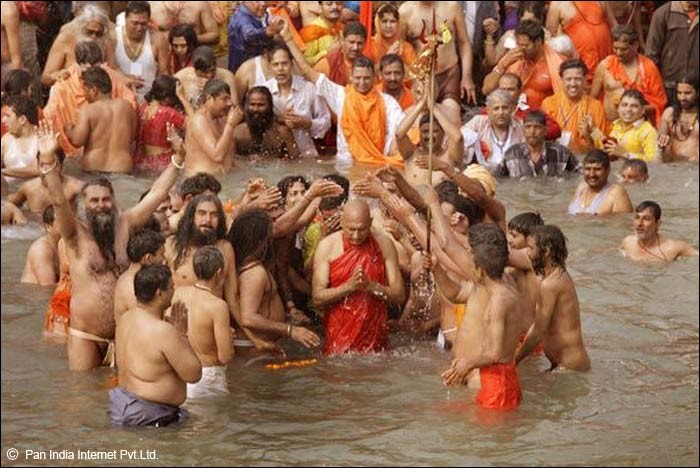
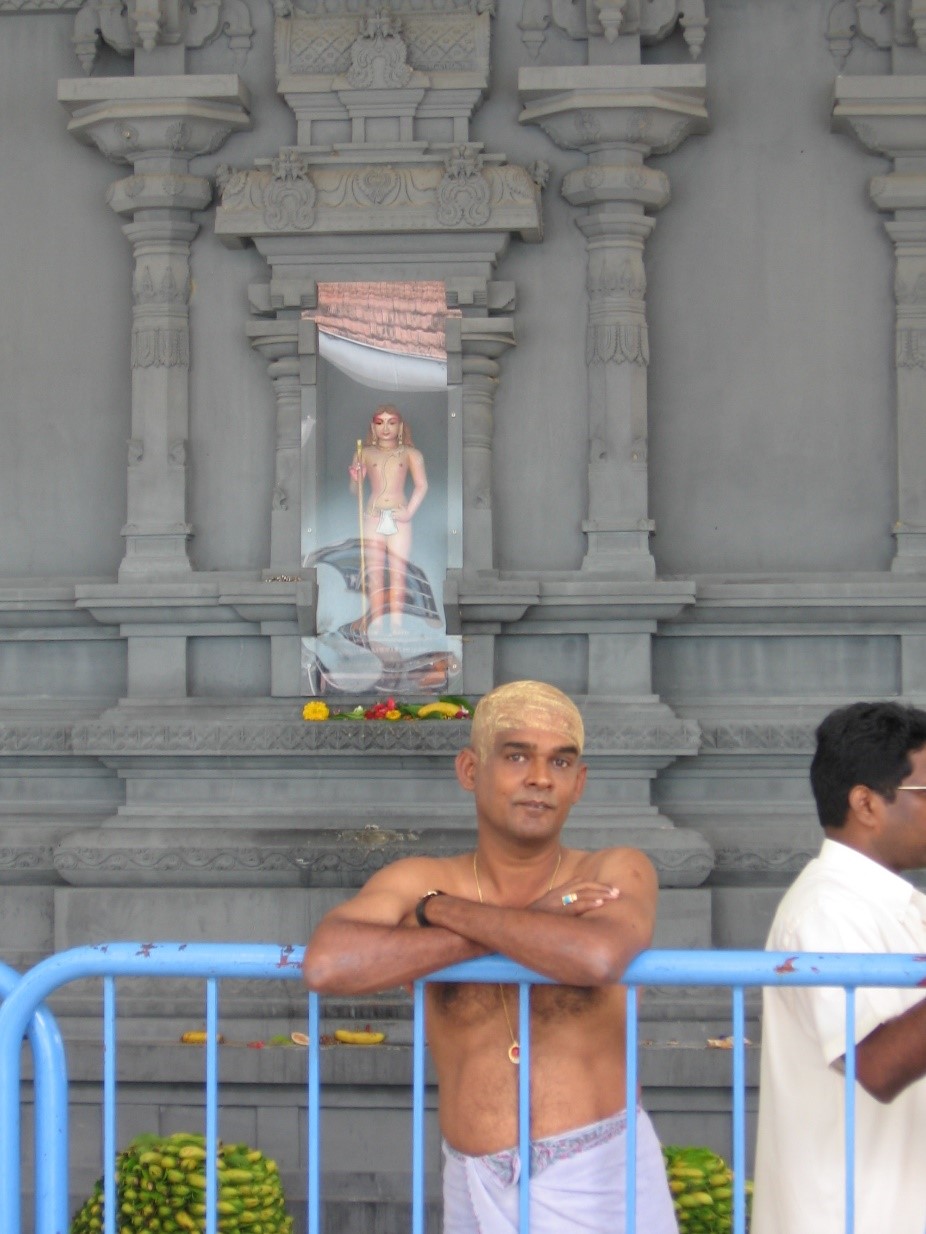
Caste
Hindus do not believe in human equality. India has an ancient system of social divisions called varna. From four class groupings in the poem of creation the idea grew that some hierarchical structure in society is part of the divine intention for the natural order. Originally society was divided into three categories: the white varna - Brahmins (priests and scholars); the red varna - Kshatriyas (rulers, administrators, soldiers); and the yellow varna - Vaisyas (peasant-farmers and merchants). But these divisions were not rigid. Later a fourth category was added: the black varna, which included Sudras. These were skilled artisans such as potters, weavers, and basket-makers, and servants.
With the evolution of a more complex society, these divisions became rigid, and a fifth category of people emerged, ranking below the Sudras. These people did the dirtiest jobs. The upper varnas treated them badly and even avoided touching them. Panchamas (fifths) or "untouchables" were the most oppressed people in society.
Mahatma Gandhi named the untouchables Harijans (children of God), but they prefer to call themselves dalit (depressed). Untouchability was officially abolished in India in 1950, but is still widely practiced.
Food
In Hinduism the word "pollution" includes both physical, and spiritual or ritual impurity. This philosophy affects many aspects of social and religious practice, and especially food.
In middle-class Hindu families of the three upper varna, the kitchen is the purest part of the home. Food is prepared and the household shrine is situated there. The person doing the cooking must have a bath and wear clean clothes. Only the right hand is used in the preparation and eating of food. Different foods are served on separate plates. Cooked food which has been touched by a member of a lower caste is considered polluted. Food touched by another person's lips is considered polluted. Certain foods like meat, poultry, and fish, and alcoholic drinks also cause ritual pollution.
Death in a family puts blood relatives of the deceased person in a state of ritual pollution. Food touched or cooked by them passes on their ritual pollution to others.
Hindus use water for personal purification, both physical and ritual. Running water is "pure", but stagnant water or water touched by someone from a lower caste is considered polluted.
Food cooked in water is kacha and easily "polluted." Such cooked food is not accepted from a member of a lower caste. Food well fried in ghee is pukka food. A Brahmin can accept such food from another person of a close caste but not, for example, from a Sudra.
Fasting, to a Hindu, does not always mean going without food. Food prepared from wheat, rice, millet, or pulses (beans) cannot be eaten during fasting, and "fasting food" is less tasty than the normal vegetarian diet. Special dishes are associated with some Hindu festivals, and food offerings are important in worship. Some Hindus are vegetarian, but this is not universal.
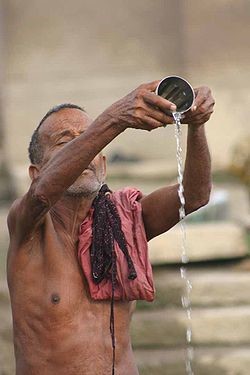
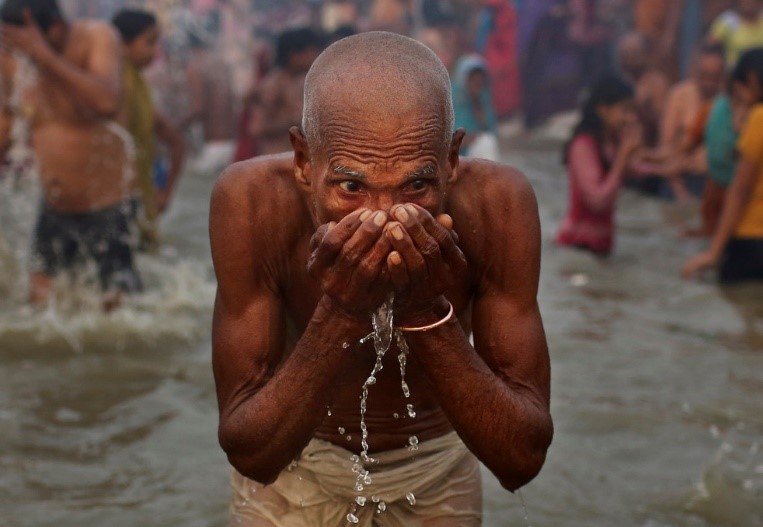
Hindu Worship
Hindus offer daily worship to family deities at household shrines. They celebrate annual festivals dedicated to different deities, and they go on pilgrimages to distant shrines dedicated to Vishnu, Shiva, or the goddess Shakti. Broadly speaking, Hindus can be divided into three groups: those worshipping Vishnu in his various incarnations; those worshipping Shiva; and those worshipping Shakti. Hinduism has many sects, or groups, and each has its own form of worship. In some sects, a human guru, or spiritual teacher, is revered with the same fervour as a deity.
Hindu worship takes different forms. Ways of worshipping include offering water to the rising sun or a river deity; sitting cross-legged in front of an image in a temple and saying the name of the deity; walking around the shrine of a deity in a clockwise direction; or singing hymns in a temple. The most common form of worship is called puja. People make offerings of red kum-kum and yellow turmeric powders, rice grains, sandalwood paste, flowers, fruit, incense, and light to an image, either at the home-shrine or at a temple. Puja is offered to the family deities each morning after bathing. A more elaborate puja is performed at times of festivals. Food and fruit are offered to the deity at puja and received back after they are blessed. This blessed offering is called prasad.
Daily puja in a Hindu temple is conducted by the chief priest and his helpers. After the morning and evening puja, the sacred light called the arati is brought into the hall of the temple. Worshippers receive the light and place offerings of money in the arati tray.
Pilgrimages
Hindus go on pilgrimages to distant temples to view the image of God and to offer worship, or to fulfil a vow. There are many centres of pilgrimage throughout India dedicated to Vishnu, Shiva, or the Mother Goddess. Important places of pilgrimage for Hindus are Badrinath in the Himalaya, Mathura on the River Jumna, Varanasi (or Benares) on the sacred River Ganga, or Ganges (Hinduism's most sacred city; the place for a Hindu to bathe, pray, die; after cremation the ashes are cast on the sacred river, and life continues), Puri in Orissa, Tirupathi and Kanchipuram near Chennai (formerly Madras), Madurai in Tamil Nadu, and Rameshwaram and Kanya Kumari at the southern tip of India.
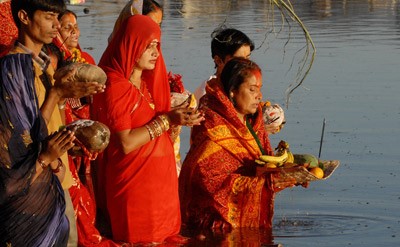
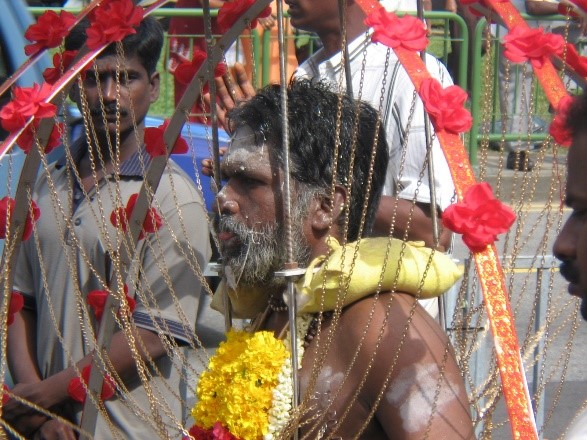
Festivals
Hindu festivals are celebrated as private worship at household shrines or as public neighbourhood festivals. Some festivals such as Raksha-Bandhan, Diwali, Navaralri, Dusserah, and Holi attract large crowds all over India. Once every 12 years more than 10 million share in a ritual bathing at the Kumbh Mela festival at Allahbad, the junction of the Ganges and Jumna Rivers. Other festivals such as Durga-Puja, Saraswati-Puja, Naga-Panchami, and Ganesha are more regional in their popularity. Every large temple celebrates the annual festival of the deity to which it is dedicated.
Hindu Life Rituals
Hindus perform rituals at important stages of development in life. Hindus believe these rituals purify the body and ennoble the personality. The ancient Sanskrit word for such a ritual is samskara, meaning sacrament. There are 16 samskaras recommended in the ancient law books, but only a few people undergo all of them. Most well-to-do Hindu families perform some of these rituals. Three samskaras are performed during pregnancy; after the birth of a baby come six childhood sacraments: to mark the birth, the naming of the child, its first outing, first solid food, first hair cut (also experienced by girls in south India), and earlobe piercing. The tenth, and initiation, sacrament is called the upanayana, when boys of the three upper varnas are invested with a sacred thread before they begin their study of the scriptures and start formal education. The next two sacraments are included symbolically in the thread ceremony. The 13th samskara is vivaha, or marriage. The 14th is the householder stage, and the 15th is the so-called forest-dwelling stage when a special puja is performed after a person retires from regular employment on the 60th birthday. The 16th and final sacrament is cremation.
The upanayana sacrament is important as the "second-birth" of a boy, after which he can represent his family in religious rituals. Worship and prayers are offered to Agni (sacred fire) to endow the boy with strength and understanding. Worship is offered to the Sun so that he may have intelligence to study the scriptures. He is then taught the Gayatri Mantra from the Rig-Veda (A mantra is a sacred utterance, often a single syllable.)
Hindus cremate their dead. The funeral pyre is lit either by the eldest or the youngest son of the deceased person. The son also has a religious duty to perform shraddha, a ritual in annual remembrance of deceased parents or grandparents.
A red mark on a woman's forehead usually signifies that she is a Hindu.
Modern Hinduism
Modern Hinduism is developing in many ways. There are several modern examples of sectarian worship such as the International Society for Krishna Consciousness (the Hare Krishna Movement); the Swaminarayan Religion; and the Sathya Sai Baba Movement.
These forms of Hinduism lay great emphasis on worship through bhakti (devotion).
Winning Hindus to Christ
- Hindus believe it is only ultimate release from the prison of meaninglessness that results in self-realisation; as Hindus also regard mankind as part of the cosmic whole and also believe that life apart (ie individualism) is disintegration of life, share the reality of Jesus Christ and His promise to make us whole;
- do not portray Christianity as an individualistic religion ("Me and Jesus" - this is a Western construct, not a New Testament one);
- show them that Jesus can break the endless cycle of incarnations; He came to set people free;
- live out of your relationship with God; a higher "you" is not the answer, the God of power is;
- emphasize a person relationship with God;
- emphasise the spiritual nature of worship of God, not external forms (as in Hinduism); remember the Woman at the Well, (John 4) and Jesus' comment that God is spirit and must be worshipped in spirit and in truth;
- minister to spiritual needs; one Hindu writer suggested the Hindu way of life is determined by the, "yearnings of the soul rather than by the quest of the mind or the needs of the body" - this is exactly what Jesus came to minister to;
- communicate the Christ of the Scriptures, not the Western religion Hindus have seen for centuries; show how liberation comes not through yoga or other techniques, but a genuine "rebirth" brought about by the Holy Spirit;
- live as though Christ is more important that belongings - Hindus believe spiritual leaders should demonstrate by their own austerity that the physical world is not the centre of meaning;
- share the peace you have in your life through forgiveness of your sin; and the assurance you have that God has taken your sin away forever;
- encourage Hindus who receive Jesus Christ as Saviour to formally renounce Hinduism, polytheism, and be baptised, not simply add Jesus to their collection of gods.
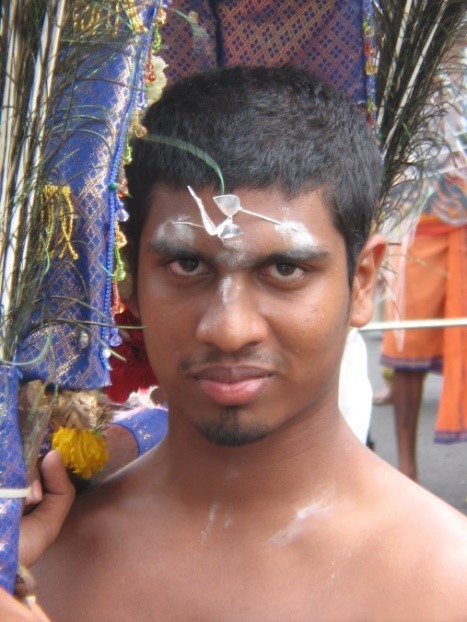
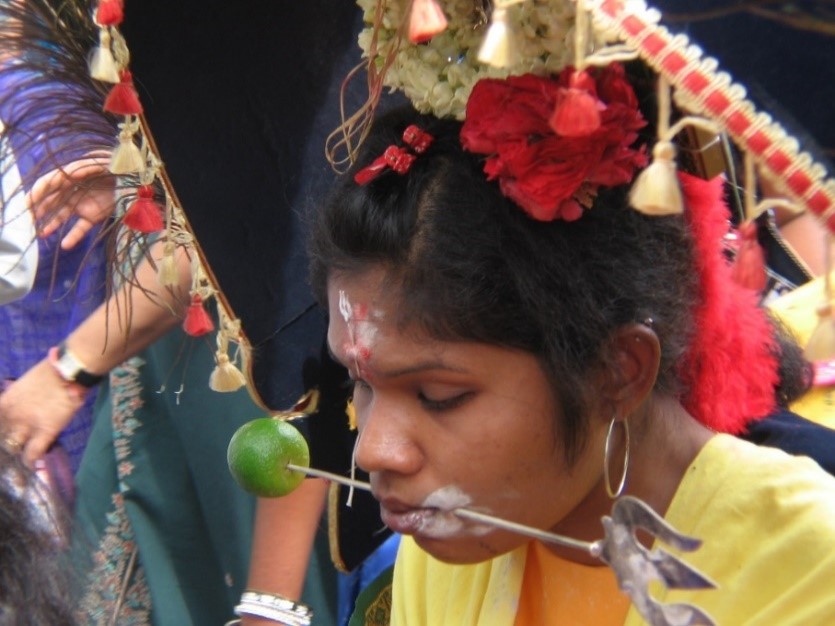
Nearly a billion Hindus -they all need Christ.













